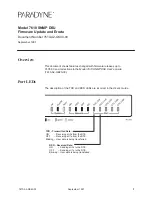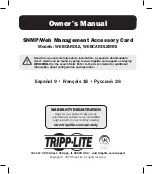
61-3
Catalyst 4500 Series Switch, Cisco IOS Software Configuration Guide - Cisco IOS XE 3.8.0E and IOS 15.2(4)E
Chapter 61 DHCPv6 Options Support
Information About DHCPv6 Options Support
DHCPv6 Interface-ID
The interface-ID option is used by relay agents to decide which interface should be used when
forwarding a RELAY-REPLY packet. If a relay agent receives a RELAY-REPLY message with an
interface-ID option, the message is relayed to the client through the interface identified by the option.
The server must copy the interface-ID option from the RELAY-FORWARD message into the
RELAY-REPLY message the server sends to the relay agent in response to the RELAY-FORWARD
message. This option must not appear in any message except a RELAY-FORWARD or a RELAY-REPLY
message.
Servers can use the interface-ID for parameter assignment policies. The interface-ID must be considered
as an opaque value, with policies based on exact match only; that is, interface-ID must not be internally
parsed by the server. The interface-ID value for an interface must be stable and remain unchanged, for
example, after the relay agent is restarted; if the interface-ID changes, a server will not be able to use it
reliably in parameter assignment policies.
Lightweight DHCPv6 Relay Agent
The Lightweight DHCPv6 Relay Agent feature allows relay agent information to be inserted by an
access node that performs a link-layer bridging (non-routing) function. Lightweight DHCPv6 Relay
Agent (LDRA) functionality can be implemented in existing access nodes, such as DSL access
multiplexers (DSLAMs) and Ethernet switches, that do not support IPv6 control or routing functions.
LDRA is used to insert relay-agent options in DHCPv6 message exchanges primarily to identify
client-facing interfaces. LDRA functionality can be enabled on an interface and a VLAN.
An LDRA device or interface has the following features:
•
Maintains interoperability with existing DHCPv6 relay agents and servers.
•
Is functionally the equivalent of a Layer 2 relay agent, without routing capabilities.
Note
LDRA is a device or interface on which LDRA functionality is configured.
Background
A variety of different link-layer network topologies exist for the aggregation of IPv6 nodes into one or
more devices. In Layer 2 aggregation networks (IEEE 802.1D bridging or similar) that have many nodes
on a single link, a DHCPv6 server or DHCP relay agent normally does not recognize how a DHCP client
is attached to a network. LDRA allows relay-agent information, including the Interface-ID option, to be
inserted by the access node so that the information may be used by the DHCPv6 server for client
identification.
Interoperability between DHCPv6 Relay Agents and LDRA
DHCPv6 relay agents are used to forward DHCPv6 messages between a client and a server when the
client and server are not on the same IPv6 link. A DHCPv6 relay agent also adds an interface ID option
in the upstream DHCPv6 message (from client-to-server) to identify the interface on which the client is
connected. This information is used by the DHCPv6 relay agent while forwarding the downstream
DHCPv6 message to the DHCPv6 client. The DHCPv6 relay agent is implemented alongside the routing
functionality on the common node.
Summary of Contents for Catalyst 4500 Series
Page 2: ......
Page 4: ......
Page 2086: ...Index IN 46 Software Configuration Guide Release IOS XE 3 9 0E and IOS 15 2 5 E ...
















































